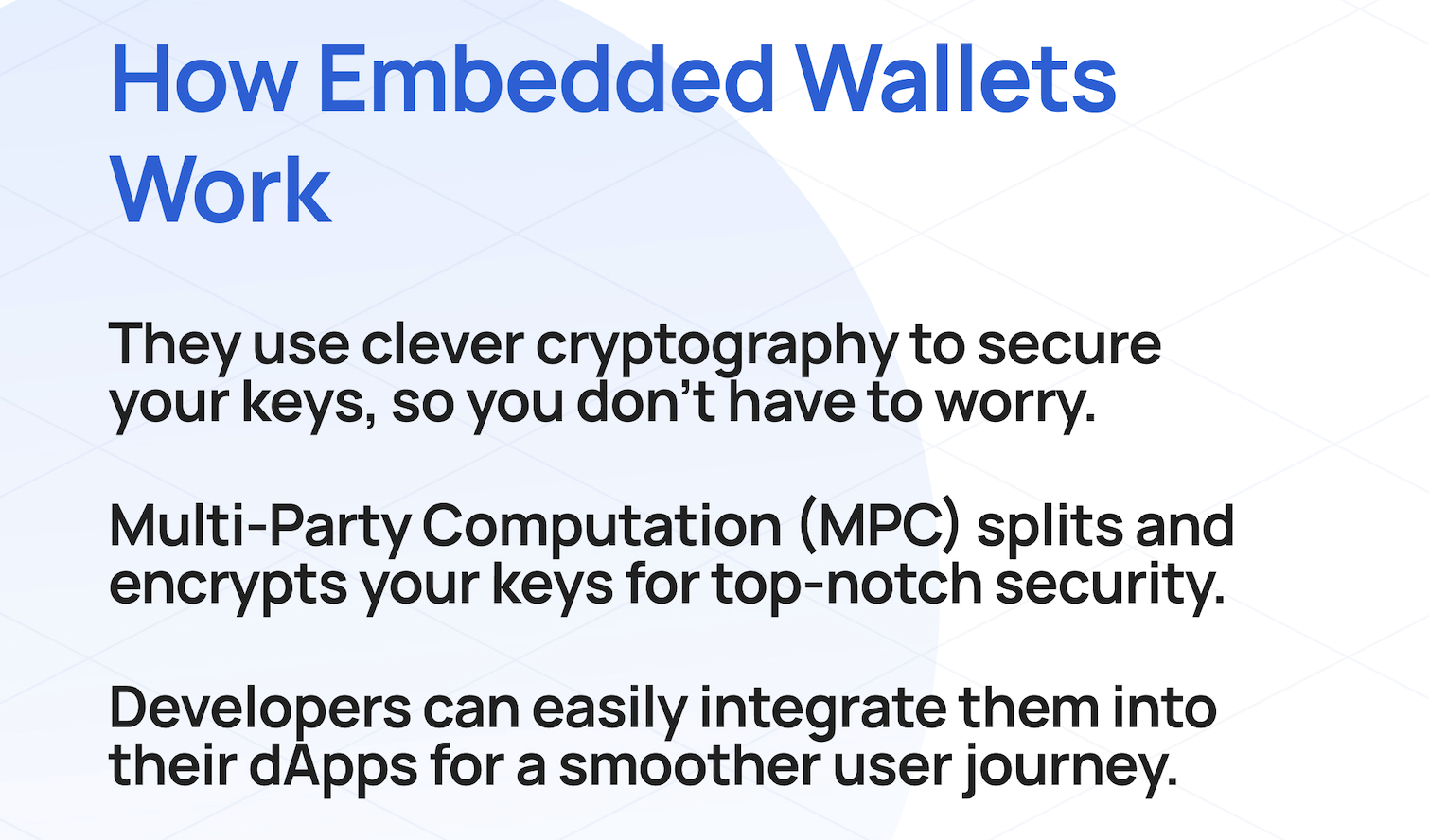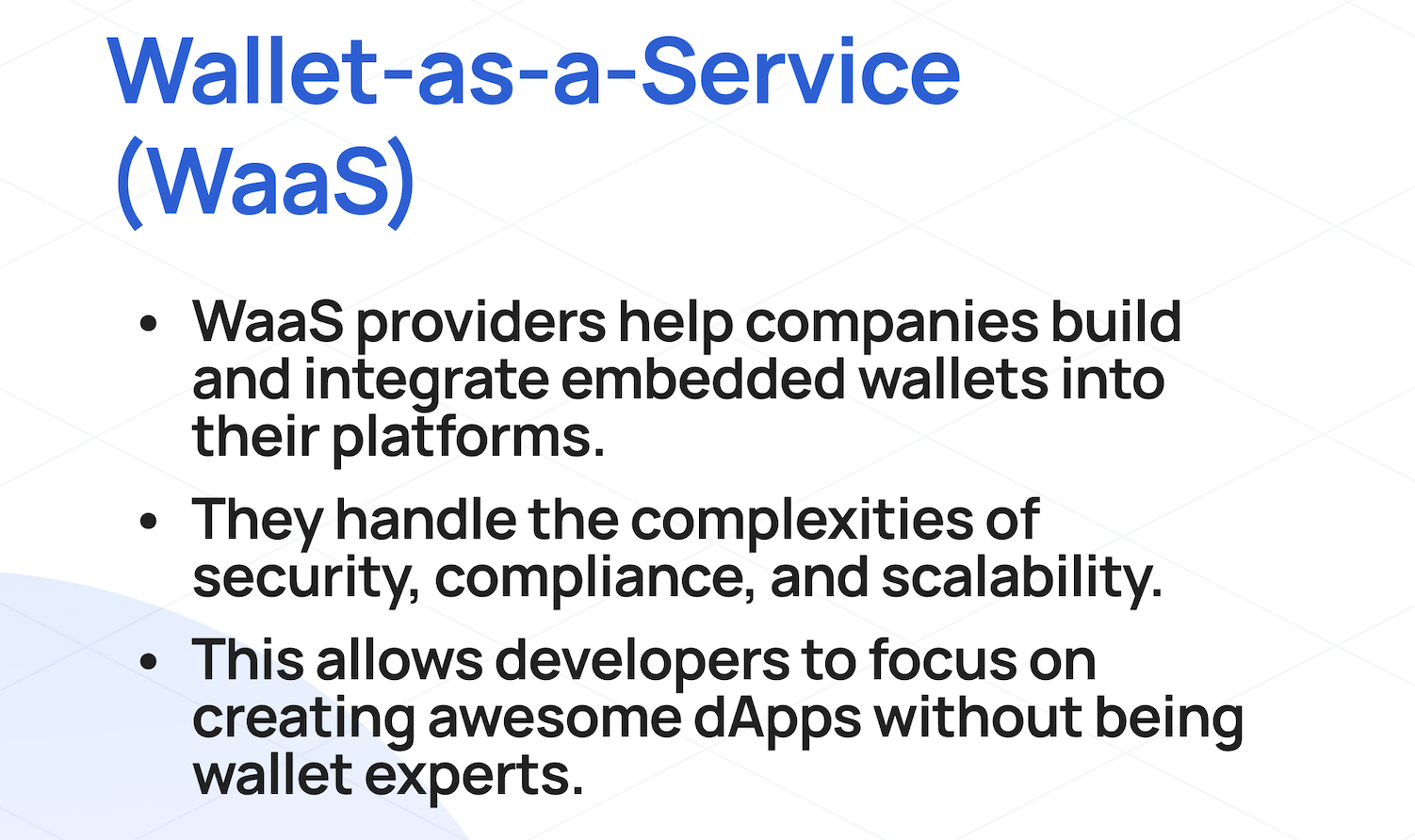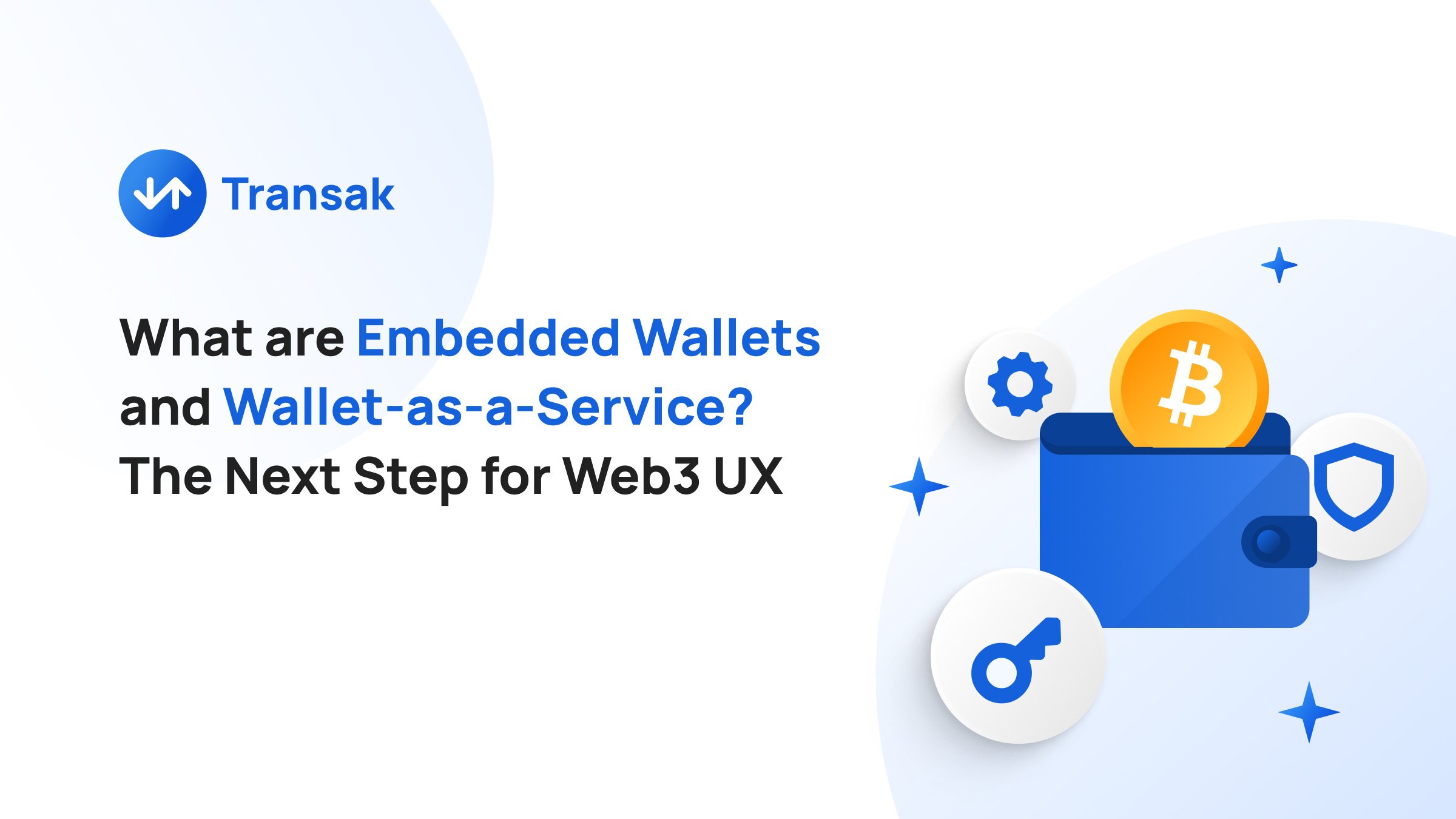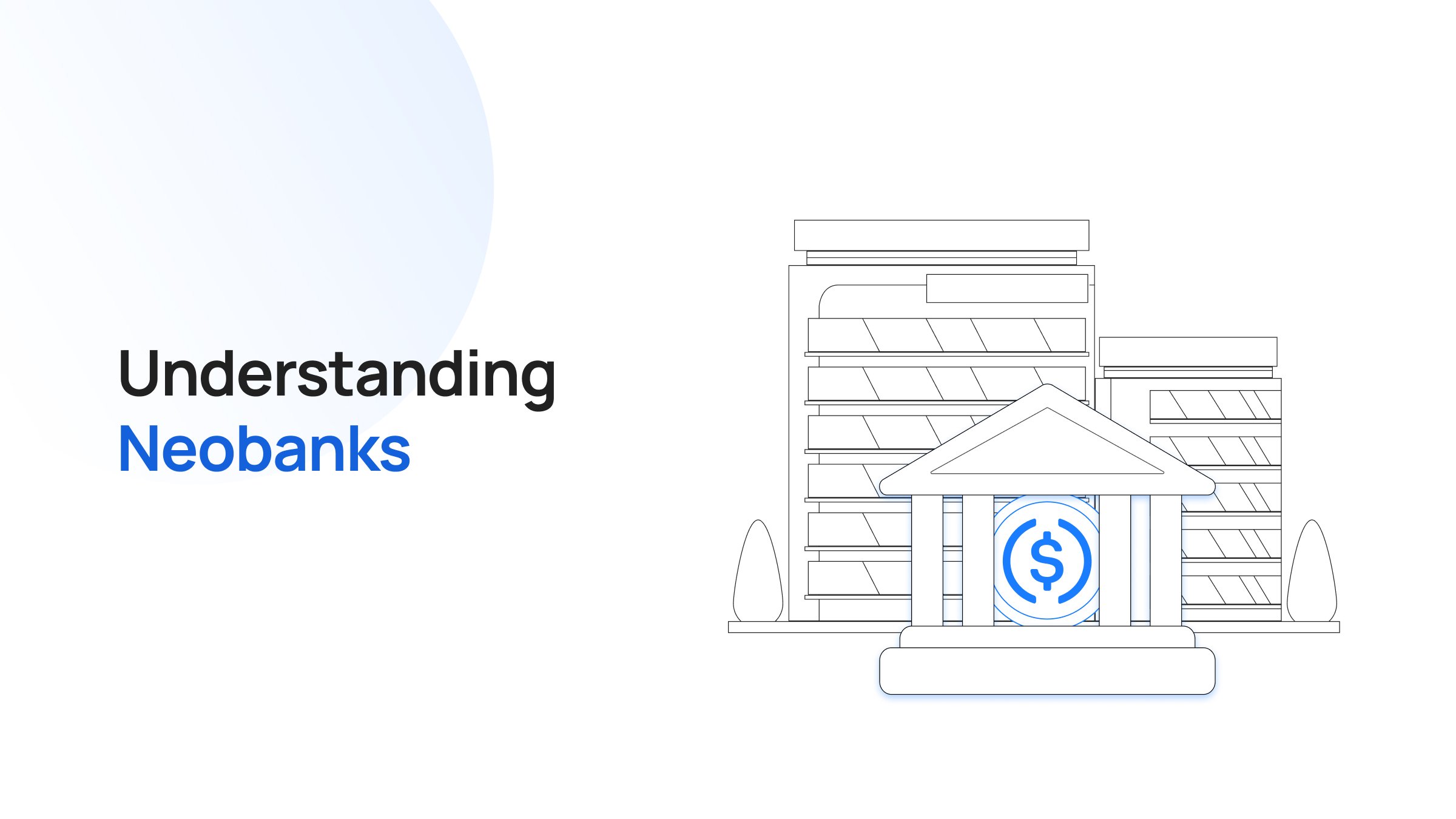One of the major challenges that crypto users face is the dependency on external wallets for transactions. The switch between multiple apps and wallet creation causes inconvenience for early users, and here, embedded wallets emerge as an ideal solution.
Embedded wallets simplify the overall user experience when using crypto platforms or applications. For example, you can use these wallets directly from your dApp without the need to open another app or external wallet.
Based on the Research and Markets report, the global crypto wallet market cap is predicted to surpass $48 billion by 2030 at a CAGR of close to 25%. Considering this projection, the wide adoption of embedded wallets will help speed up this growth, allowing smooth beginner onboarding to the web3 space.
What Are Embedded Wallets?
Embedded wallets are crypto wallets that operate within an application, unlike the more-common non-custodial wallet apps by third-party providers. These wallets allow users to sign wallet transactions without switching between multiple applications.
Therefore, an embedded wallet removes the tedious step of connecting to the wallet and authorizing it. Now, with these wallets, web3 users can seamlessly use decentralized exchanges, NFT marketplaces, and other dApps.
Beginners in the web3 space can also use programmable wallets, which are as simple as signing in on social media accounts. They don't need to worry about the complexities of seed phrases or private keys.
How Do Embedded Wallets Work?
Embedded wallets integrate cryptographic functions into the user interface of the dApps for efficient functioning. This integration plays an important role in providing faster transaction approval and removing third-party services.
The embedded wallet then creates a secret key for the user on their device. This key acts as any other login password that allows users to access their wallets.
The secret key is then secured using the multi-party computation (MPC) technology. MPC ensures the complete privacy of the key, and it is first encrypted, broken, and shared with multiple parties to maintain high security.
After all these privacy and security measures, the embedded wallets are built into dApps. This built-in feature helps you to pay or transfer assets while staying on that dApp.
Benefits of Embedded Wallets
- Simplified User Experience
The main aim of the programmable wallets is to provide the best user experience for web3 users. The built-in availability of these wallets helps you conduct seamless transactions by reducing the time and effort required.
Now, you don't need to have multiple wallets to use different platforms or dApps. You can use one embedded wallet to access web3 services without even thinking about private keys or multiple passwords.
- Improved Security
In the case of embedded wallets, private keys are stored in pieces across different storage options through MPC. This method of storing the full keys in a place highly reduces the chance of stealing the keys.
You can also opt for additional multi-factor authentication to safeguard your assets. Moreover, MPC technology also safeguards user's assets from unauthorized access and theft.
- Developer Friendly
Embedded wallets offer more functionalities for developers with less code. For example, developers can build dApps using APIs, web, iOS, or Software Development Kits (SDKs).
Developers can also access and manage all embedded wallet-based interfaces in one place. This feature helps troubleshoot transaction logs, request testnet tokens, or define team roles in a project efficiently.
- Reduced Expense
The integration of account abstraction allows you to execute multiple transactions at a time. This feature helps to save time and reduce the total gas fees required.
You can also use the gasless or meta transaction feature while using dApps. In these transactions, gas fees are freely covered to provide a smoother onboarding user experience.
What is Wallet-as-a-Service (WaaS)?
Wallet-as-a-Service is a solution that facilitates companies in creating and integrating digital wallets on their platform. These WaaS providers help projects enable embedded wallets that offer high-standard user convenience.
WaaS comes with fully customizable features that help projects modify the design according to their use case. Moreover, the availability of reliable application programming interfaces (APIs) facilitates a seamless dApp experience for users.
Most importantly, WaaS takes care of complexities like financial regulations and security aspects. Therefore, the projects that integrate programmable wallets can focus on delivering their services without bothering about other external matters.
How Does WaaS Work?
WaaS allows developers of blockchain projects to custom-build wallets that match the project's mission. The availability of multiple APIs provides users with an enhanced experience while using the platform.
The developers also integrate numerous security features that provide you with a wide range of options to secure your wallet and store valuable assets like cryptocurrencies or NFTs. For example, you can set passwords, PIN codes, or biometric locks to improve your wallet's security.
The account recovery option comes with chosen security questions that help you to recover your wallet. For this reason, if you forget your password, you can easily recover it without the requirement for private keys or seed phrases.
Developers can also sponsor the gas fees to users to complete their transactions. This account abstraction based gas fee support helps users transact using dApps with a wallet without crypto tokens.
WaaS provider's streamlined wallet management system tracks and identifies the user's crypto deposits in real-time. Moreover, the use of multi-party computation secures user's assets and restricts unauthorized access.
Major WaaS Components
The main components of WaaS include the following:
User Interface (UI)
It is essential to have a UI that understands user requirements and provides the best user experience. Here, WaaS providers offer UI templates that can be modified in such a manner that it suits their business model and offers a sleek UI for users.
This customizable UI also allows projects to edit and add to their updates and new releases. This flexibility encourages projects to experiment with new services and platforms while maintaining their brand identity.
Server-Side Infrastructure
WaaS providers design scalable crypto wallet infrastructure to offer efficient functioning, scalability, and security to programmable wallets. Here, the security compliance includes multi-factor authentication features and tools to complete KYC verifications.
The WaaS provider also manages the data associated with every user's embedded wallet activities. Moreover, its transaction processing engine handles, updates, and monitors transactions on the blockchain.
API Integration
Integrating APIs allows platforms to enable wallet operations such as token transfer and swap, to name a few. These wallet APIs also provide users with real-time data on crypto assets, enabling users to make an informed decision based on the live market price of assets.
APIs also support adding more features to attract new customers to the platform. For example, projects can introduce reward systems or referral programs on their dApps.
What is the Need for WaaS in Web3?
The WaaS is turning out to be a highly necessary transition for the companies that operate in the web3 space. The massive growth in blockchain-based projects and the increased adoption of cryptocurrencies globally will add more growth to WaaS in the near future.
WaaS helps web3 companies to provide complete ownership of their wallet and their access to the users. The implementation of industry-standard security features like MPC offers users a feeling of security related to the valuable user assets.
The scalability that WaaS service providers offer is also a major factor to consider for web3 projects. Enabling WaaS facilitates the onboarding of millions of new users without any transaction delay due to high network usage.
Web3 projects can benefit from the multi-chain transaction features that the WaaS offers that help interact with numerous blockchain networks. For example, this feature allows users to send or receive payments from different chains.
Examples of WaaS Providers
1. Coinbase
One of the top crypto exchanges, Coinbase, emerges as the Wallet-as-a-Service provider that allows onboard users to create, manage, and restore wallets in a few simple steps. Users can access their wallets using their username and password with total ownership and control over their wallets.
Secured by Coinbase's multi-party computation and other cryptography techniques to safeguard user's assets. This WaaS provider also guarantees full self-sovereignty to the user's embedded wallet.
Developers can choose free or premium plans to experiment with various WaaS features. The free plan offers instant API access, NFT APIs, advanced APIs, and 120K daily requests. At the same time, the paid plan offers 300K daily requests and priority email support, 25+ supported protocols, etc.
2. Magic
Magic is a WaaS provider that offers a seamless user experience (UX) to rescue friction for users while using various web3 platforms or apps. This provider is compatible with over 20 blockchains, and developers can work on their APIs with few lines of code.
Enterprise-grade security and compliance like SOC 2 Type 2, CCPA, and GDPR are implemented to provide high-end security. With Magic, developers can create a maximum of 2,000 embedded wallets per second.
Developers can use up to 1,000 free monthly active wallets on Magic's free plan. This free plan also offers 10+ Auth login options, various SDKs, 25 blockchain support, etc. The paid plan offers over 5,000 wallets, with custom blockchain support and VIP support, to name a few.
3. Web3Auth
As a leading WaaS provider, Web3Auth allows users to choose the desired level of authentication to provide the best security for user's embedded wallets. The privacy and security of wallet users are safeguarded with the help of compliance like CCPA, SOC2, and more.
Web3Auth uploads all required documents based on their product, data, network, corporate, and app security. Moreover, users can verify their risk profile, which includes impact level, third-party dependence, and data access level.
Web3Auth's free base plan allows developers to use 1,000 monthly active wallets and provide access to their built-in social login providers. The premium plan offers more features like customizable multi-factor authentication, wallet services, enhanced community support, or advanced MFA methods.
Conclusion
Embedded wallets undoubtedly help the web3 user with its enhanced security, low gas fees, and user-friendly interface. Developers can now build simpler wallets that support multiple blockchain networks without compromising on security aspects.
With embedded wallets, you don't need to worry about losing your wallet's private key. On a positive note, the Wallet-as-a-Service (WaaS) providers are acting as a frontier to boost embedded wallet adoption in the coming years.






